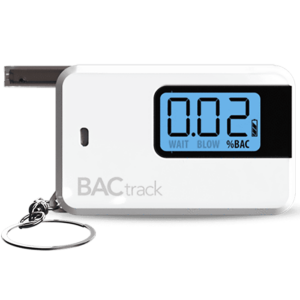Workplace Alcohol Testing: Reasons, Methods, and Best Practices
11 January, 2024

Workplace alcohol testing plays a vital role in identifying and preventing alcohol-related problems among employees. Accordingly, business owners conduct alcohol tests for specific reasons. This is whether for pre-employment screening, random testing, reasonable testing, or post-accident testing. Furthermore, a wide range of methods are used. This involves urine testing, saliva testing, blood testing, hair testing, and alcohol breath testing. Nevertheless, implementing such a workplace policy requires careful planning and consideration.
Alcohol abuse and harmful substances in the workplace are a significant problem. This can lead to accidents, decreased productivity, impaired decision-making, and health conditions. Hence, maintaining workplace safety is crucial for any organisation. This has led to the occurrence of alcohol testing requirements to address the issue of alcohol impairment and related matters. This article will present the reasons for conducting alcohol testing programs in workplaces, the methods used, and the best practices for implementing them.
Reasons for Workplace Alcohol Testing
Workplace alcohol testing occurs due to various reasons. Before hiring a prospective employee, companies may require them to undergo alcohol screening. This is a part of the pre-employment tests. Hence, it is done to ensure that individuals in the hiring process are not under the influence of alcohol or other types of substances. Also, this helps employers in the decision-making process.
Accordingly, random testing occurs without prior notice to employees. This approach helps to deter workers from consuming alcoholic beverages during work hours. Furthermore, reasonable cause testing arises if an employer observes behaviour that raises suspicion of risk of impairment. The indicators may include signs like slurred speech, unsteady gait, or erratic behaviour.
Following a workplace accident or incident, an alcohol testing clause may be required as a part of the investigation process. This is done to determine whether alcohol impairment has a role in the incident. Moreover, this is also to ensure the health and safety of employees moving forward. Nevertheless, this testing helps companies to understand the factors contributing to the accident and take preventive actions.
Effects of Alcohol in the Workplace
- Impaired employees: alcohol consumption can significantly impact the cognitive abilities, coordination, and decision-making skills of a person. Hence, it can increase safety risks, including accidents or injuries.
- Safety concerns: it poses serious safety concerns for the individual and their colleagues. Therefore, it can lead to hazardous situations, particularly in high-risk workplaces.
- Negative impact on team dynamics: it can disrupt team dynamics and working relationships. This may lead to conflicts and misunderstandings.
- Legal and reputational risks: workplace alcohol consumption can expose an organisation to legal liabilities and damage its reputation.
- Health and well-being consequences: regular alcohol consumption can have long-term health implications for employees.

Methods Used in Workplace Alcohol Testing
One of the most common methods for workplace alcohol testing is urine testing. It involves collecting a urine sample and testing it for the presence of alcohol metabolites. Another type is the oral fluid or saliva test. This method can provide rapid results and is relatively non-invasive. Hence, it makes it a convenient option for workplace testing.
Blood tests are one of the most accurate methods for determining alcohol levels in the body. It utilises a blood sample to analyse and measure alcohol concentration in the bloodstream. Meanwhile, hair tests involve the collection of a small sample of hair from an individual. This approach can provide a historical overview of alcohol consumption, usually up to 90 days.
Furthermore, breath alcohol testing or breathalyser tests are commonly used for immediate alcohol screening in the workplace. It involves the individual exhaling into a breathalyser device, which measures the Blood Alcohol Concentration (BAC). Nevertheless, it is convenient, non-invasive, and provides rapid results. Each method has its advantages, and the choice of method depends on specific needs.
What Are the Common Testing Methods?
In the workplace, common alcohol testing methods include urine testing, saliva testing, and breath testing. Urine tests are a prevalent method as they are non-invasive and make it easy to collect the specimen. Also, it is effective in detecting recent alcohol consumption. Saliva tests are another common type of assessment. It also has a non-invasive nature and the ability to provide rapid results.
Additionally, breath testing is widely utilised for immediate alcohol screening. This method typically involves providing a breath sample, which then measures the BAC level. Breath tests are highly convenient and can provide quick results, making them preferable for on-the-spot testing.

Best Practices for Implementing Workplace Alcohol Testing
Implementing workplace alcohol testing requires careful consideration of best practices to ensure fairness, accuracy, and legal compliance. Accordingly, employers may develop a comprehensive alcohol policy testing. This outlines employee rights, the purpose of the testing, procedures for administering the tests, and disciplinary process for violations. Nevertheless, it is the responsibility of the employer to communicate this to all employees.
Moreover, companies must ensure that their alcohol testing policies adhere to relevant federal, state, and local laws. Also, this includes any regulations for privacy and discrimination. Protecting the privacy and confidentiality of employees is paramount. Hence, the sample collection, testing, and reporting procedures should be designed to safeguard sensitive information.
In addition, employers may educate workers about the purpose and procedures of alcohol testing. Clear communication can help employees understand the rationale behind testing and their rights in the process. Also, it is crucial to apply the testing policies consistently across all employees. Employers should avoid selective enforcement and ensure workers are subject to the same testing protocols.
Support and Treatment Programs
Alcohol testing policies involve not only the testing procedures but also providing support and treatment programs. Employers may consider implementing Employee Assistance Programs (EAPs) that offer employees confidential counselling and support services. In the event of a non-negative test, employers may consider having a system in place to refer affected workers to treatment resources.
Accordingly, educating employees about the available support and treatment resources is crucial. Employers should promote awareness of these services. This fosters an environment where workers feel comfortable seeking help if they are struggling with alcohol-related issues. Also, the company may collaborate with healthcare professionals to address the problem.
Conclusion
Alcohol consumption can impair workers, pose safety concerns, and may negatively impact the reputation of an organisation. Hence, workplace alcohol testing is an important practice in ensuring the safety and well-being of employees. Accordingly, employers conduct the test for several reasons. This is for pre-employment, random, reasonable suspicion, and after an accident testing. Furthermore, various methods are available for testing. This includes urine, saliva, blood, hair, and breath testing.
Nevertheless, the most common methods in the workplace are urine, saliva, and breath tests. Moreover, implementing the testing requires consideration of the best practices. This may involve developing a precise alcohol testing policy, adhering to relevant laws and regulations, inhabiting the rights of employees, and being consistent. Also, support and treatment programs are crucial in the policy. Employers may consider implementing EAPs, having treatment resources, educating employees, and collaborating with medical professionals.





























